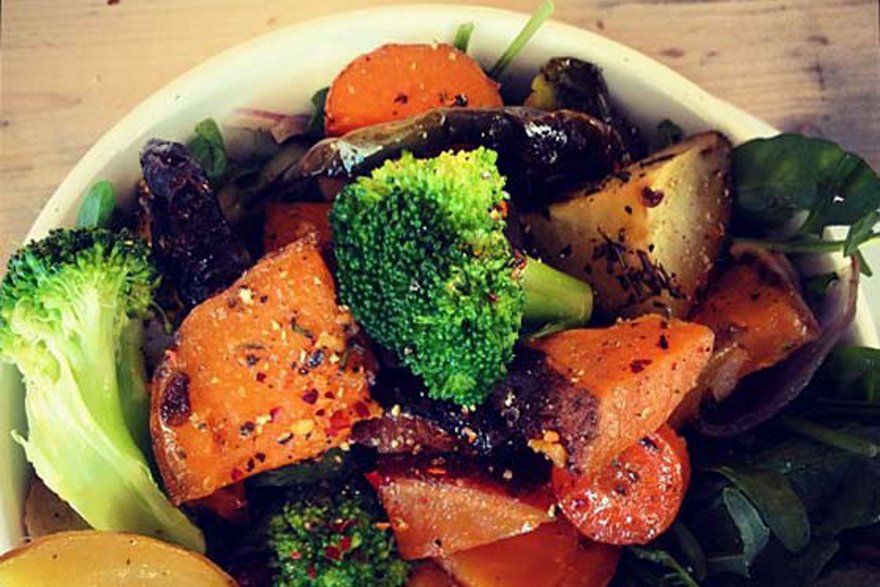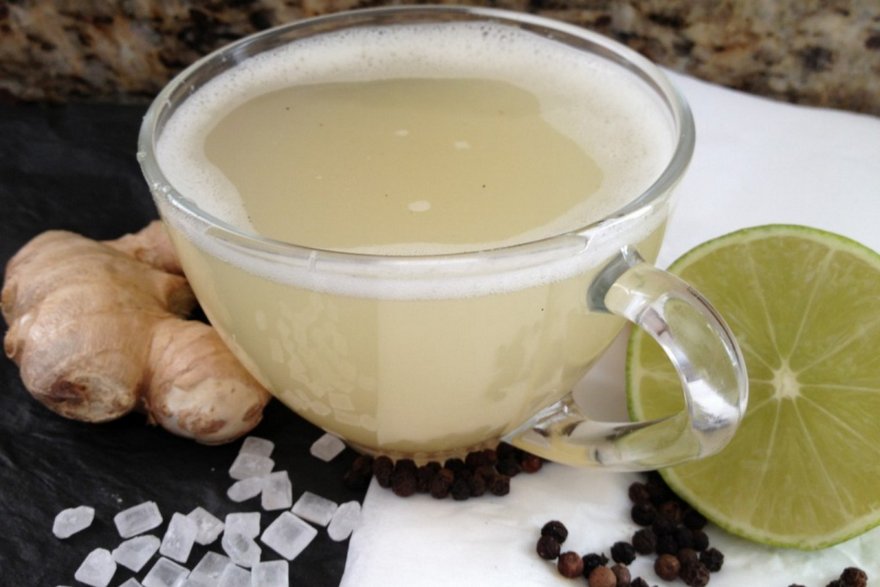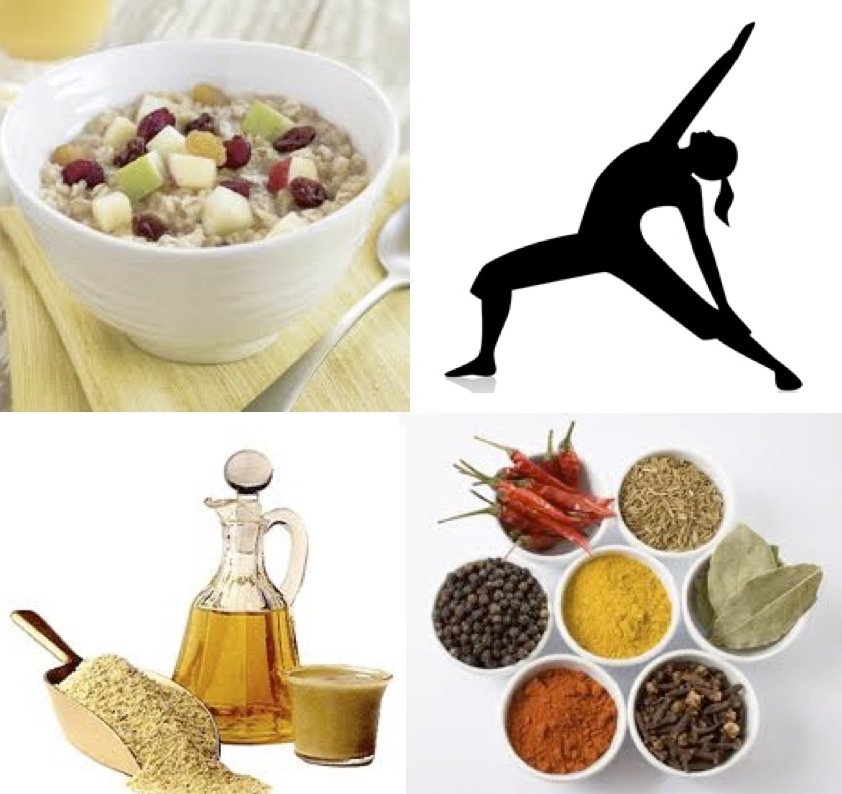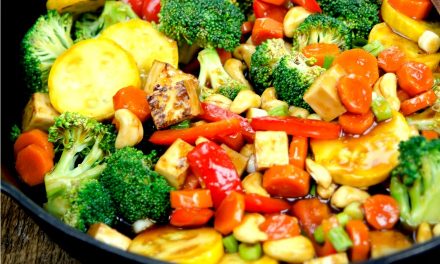According to the ancient practice of Ayurveda all food is said to consist of different chemical compositions resulting in one of the six classified tastes: sweet, sour, salty, bitter, pungent and astringent.
Each of these tastes is a combination of the five elemental mahabhutas – earth, water, fire, air and space. The great seers of Ayurveda proclaim the existence of certain sub phenomena upon consumption of each nutrient. These can be observed as Rasa or taste, Virya or power and Vipaka or digestive action. Virya or the power factor is the potency of the food in terms of two sensations; Ushna meaning hot and Shita denoting cold.
[wp_ad_camp_1]
It is extremely imperative to understand how one can identify and distinguish the different hot and cold foods from each other. Choosing the right foods for one’s constitution and metabolism is important. There is common misconception that freshly cooked food is hot while refrigerated food is cold. But in fact there is no correlation with the prevailing temperature of the food.
So if one takes ice cream despite being cool in temperature, it induces heat in the body. The hot or cold nature is essentially determined by the impact of heating or cooling effect upon consumption of the food. They affect different the body types, namely Vata, Pitta and Kapha in diverse ways. Hence, all food can be classified into the two categories of potency based on the same. There are also four sub categories of hot and cold foods.
Hot foods with the Usna potency generally depict properties of combustion, digestion, and imparts a feeling of lightness to the body and mind. Hot foods also lead to purging, vomiting and are said to destroys semen. Usna foods subdue Vata (wind predominance) and Kapha (mucus predominance) and promote Pitta (bile predominance) dosha. Cold foods with the prevailing Shita aspect encourage nourishment, strength and steadiness. They also play a role in aiding body fluid buildup. Shita foods also create a sense of heaviness.
They are also believed to subdue the Pitta dosha while promoting the other two. Each ingredient in a recipe has cooling or heating effects that directly affect the digestion process and metabolism. Hence, while putting together a meal it is important to balance the hot or cold aspect while keeping in mind the requirements of the body type, the seasonal changes etc.
Generally foods with a hot or spicy taste are said to be of the Usna virya but then there are exceptions too. For example honey has a sweet taste but is a hot food. Some common Usna ingredients include onions, artichoke, garlic, ginger, kohlrabi, tomatoes, peppers, mustard, cumin, ghee, dates, pickles etc.
They are good for digestion but if consumed in excess can provoke overheating maladies like gastritis, ulcers, rashes etc. Hot foods can increase one’s appetite, resulting in gluttony and heartburn. Cold foods like asparagus, cucumbers, melons, coconut, cauliflower, oranges, lychee, pumpkin and fennel are great for cooling down Pitta dosha body types. Cold food has a refreshing effect on the body when the outer environs are hot, but they are generally harder to digest.
They can restrict digestion and make the immune system less active. Most sweet fruits are Shita virya while sour are of the Usna type but lemon is an exception.
Food is also further categorized into sushk (dry), isnigdh (moist), laghu (light) and finally guru (heavy). Most dry foods are hot while unctuous foods are cold, again this may vary with certain fare. Most heavy foodstuffs which are generally bitter, sour or pungent in nature are cold while light foods which are salty, sweet and astringent are hot. Of course there are exceptions in tow. Hence, one must consume hot and cold foods in balance and chart out meal plans.
There are various recommended food based on body types. Here is some insight on the same in terms of what is best to consume:
Vata Dosha:
One should consume food that is warm, cooked and nourishing, which makes it easily digestible. Foods like dairy products like milk and ghee, rice, as well as vegetables like cauliflower, beans, zucchini, broccoli, sweet potatoes are great for the Vata type. Sattvic foods that are Usna rich in nature are ideal for Vatas too. Some good fruit options include plums, rhubarb, kiwi, nuts, cranberries, grapefruit, bananas etc.
Pitta Dosha:
The general tip is to avoid fried and spicy foods. Mangoes, cherries, melons, avocados are great for Pitta types. Salads with greens like kale, arugula and dandelions are also recommended. Mint, melon and cucumber smoothies and coconut puddings can also be enjoyed by Pitta types.
Kapha Dosha:
Light, warm and spicy foods are best suited for Kapha types. Dishes can be spiced up with ginger, cumin, black pepper, sesame, turmeric etc. Fruits like apples, pears, peaches, figs and pomegranates are a good for the constitution. One can also try bitter dark greens, beans, pulses etc. Drinks such as tea with dried ginger and lemon flakes or hibiscus tea with lime and honey are suggested.
Apart from these there are several balanced meal plans available for those with mixed constitutions with the requisite amount of hot and cold foods. One can delve deeper into food charts and zero in on a suitable diet of blending hot and cold foods. Going by the typical understanding of hot and cold in terms of temperature, food consumption can have effects on digestion too.
Even in that case warm and freshly cooked food is best for digestion. The respected Ayurveda text Charaka Samhita mentions the fact that food should not be left for a long time after cooking and should be eaten when hot. If cold then it is slow to assimilate and can add stress on the digestive tract. Debris and residue are also more in cold foods.
While medicines help prevent diseases and disorders, food plays an equally important preventive and curative role. Proper consumption is very significant for sustenance and wellbeing and so care must be taken on a daily basis.













Very very useful for all
Thanks for giving again invaluable information which will help in resolving many a diseases of present day style of living.
High regards to you for awakening the human health with all the good benefits of Yoga, Ayurveda and various types of food.
Thanks to you